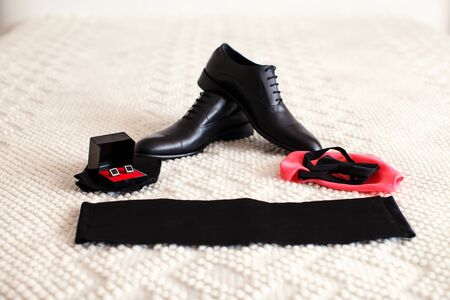Understanding the British Weather and Why Preparation Matters
If you’ve ever spent a weekend under canvas in the UK, you’ll know that British weather has a reputation for being delightfully unpredictable. One moment, you’re basking in gentle sunshine, the next, clouds roll in and drizzle begins to fall without warning. This ever-changing climate is part of what makes camping here such a unique adventure, but it also brings its own set of challenges—most notably, keeping your clothes and kit dry.
Even in the height of summer, sudden rain showers can leave socks soggy and sleeping bags damp. Morning dew clings stubbornly to tents and boots, while blustery winds may whip up unexpected mists. For families camping together, these wet surprises can turn into memorable stories—or minor disasters—depending on how prepared you are. That’s why understanding the quirks of UK weather is an essential first step before heading out on your camping trip. With a bit of know-how and some forward planning, you can handle wet gear with confidence and keep spirits high, even when the rain sets in.
Choosing the Right Kit: Fabrics and Gear That Cope With Wet
When camping in the UK, unpredictable showers and damp conditions are all part of the adventure. To keep your family comfortable and confident, it’s essential to choose clothing and equipment suited for these unique British challenges. Let’s explore how you can select the best kit to manage wet clothes and gear, so everyone stays cosy and dry during your outdoor adventures.
Quick-Drying Fabrics: Your First Line of Defence
The key to staying comfortable is picking clothing made from quick-drying materials. Avoid heavy cotton, as it tends to soak up water and takes ages to dry. Instead, look for synthetic fibres or technical blends that wick moisture away from the skin and dry rapidly—perfect for changeable UK weather.
Comparison of Common Camping Fabrics
| Fabric Type | Dries Quickly | Keeps Warm When Wet | Comfort Level |
|---|---|---|---|
| Polyester/Microfibre | Yes | Moderate | Smooth & Lightweight |
| Merino Wool | Moderately Quick | Excellent | Soft & Breathable |
| Cotton | No | Poor | Comfy When Dry Only |
| Nylon Blends | Yes | Good | Slick & Durable |
Practical Extras for British Camping Conditions
Apart from clothing, having the right extras makes a world of difference. Waterproof bags, also known as dry bags, are a must-have for storing spare clothes, electronics, and anything else you want to keep bone dry. Pack a few sizes—small ones for socks and gadgets, larger ones for jumpers or sleeping bags. Don’t forget lightweight waterproof covers or ponchos that easily slip over rucksacks when those surprise British showers roll in.
Packing Checklist: Must-Have Gear for Wet Weather Camping
- Dry Bags: Multiple sizes for separating wet and dry items.
- Ponchos/Rain Covers: For both people and backpacks.
- Microfibre Towels: Compact and super-fast drying.
- Shoe Bags: Keep muddy boots away from clean kit.
- Spare Socks: Always bring extra pairs!
- Laundry Bag: For stashing damp clothes until you get home.
A Parent’s Tip: Involve the Kids!
Let your children help choose their own quick-drying clothes and pack their personal dry bags. It’s a great way to teach responsibility—and makes them feel like real explorers ready for any British drizzle!

3. Setting Up a Weather-Ready Camp
If you’ve ever camped in the UK, you’ll know that the weather can be as unpredictable as a toddler’s mood swings! To keep your family’s kit and clothes dry, it all starts with how you set up camp. Let’s explore some practical, British-tested tips for pitching your tent and organising your site so you’re ready for whatever the skies throw at you.
Choose Your Pitch Wisely
First things first—location matters. Look for higher ground rather than low-lying spots where water can pool after rain. Avoid pitching directly under trees; while they might offer some shelter, dripping branches can soak your tent long after the rain has stopped. Take a stroll around the site with your little ones and make it a fun adventure to find the driest, flattest spot together.
Mastering the Art of Tent Positioning
When setting up your tent, ensure it’s pitched tautly so water runs off efficiently, rather than pooling on top. If possible, orient your tent door away from prevailing winds to minimise rain blowing inside. Encourage children to help by holding pegs or passing out guy ropes—it’s a great way to get them involved and teach teamwork!
Creating Dry Zones for Clothes and Kit
Once your tent is up, designate specific areas for wet and dry belongings. Use tarps or groundsheets underfoot to create extra barriers against dampness. Hang a washing line (a classic British touch!) between trees or poles under a tarp shelter to air out wet clothes and boots—kids will love pegging their socks out just like at home. Keeping bags and kit off the ground using crates or waterproof tubs is another simple trick to dodge soggy surprises.
With these thoughtful preparations, you’ll not only safeguard everyone’s gear but also turn camping into a comforting family routine—even when the weather is doing its best British impression!
4. Drying and Caring for Wet Clothes On-Site
When camping in the UK, it’s almost inevitable that you’ll face a damp sock or two. But don’t worry – with some clever tricks and a bit of teamwork, drying out your kit can become part of the adventure! Here are some simple, family-friendly ways to manage wet clothes and keep everyone comfortable, rain or shine.
Outdoor Drying Techniques
If the weather allows, make the most of any dry spells by setting up a clothesline. Look for sheltered spots between trees or use portable poles. Remember to secure your line tightly to prevent sagging, and use sturdy pegs so nothing blows away in a sudden gust of British wind.
Simple Clothesline Solutions
| Method | Best For | Top Tip |
|---|---|---|
| Traditional Rope Line | T-shirts, trousers, towels | Knot at both ends for extra security |
| Bungee Cord Line | Socks, small items | No pegs needed—just tuck items in! |
| Portable Folding Dryer | Pants, undies, baby bits | Stands well under awnings or inside tents |
Drying Under Shelter
If it’s bucketing down, don’t fret! Hang clothes inside your tent porch or beneath a tarp using hangers or a mini indoor rack. Position damp gear away from sleeping areas to avoid musty smells and always allow air flow—leave zips or vents open when possible. For extra soggy items, roll them in a dry towel and squeeze gently before hanging up; this helps soak up excess water.
Managing Damp Kit During Your Adventure
- Rotate Clothing: Have everyone take turns wearing dry and wet layers; little ones will love being part of the decision-making!
- Keep Wet and Dry Separate: Use labelled bags or colour-coded sacks to keep soggy gear from mixing with clean kit.
- Night-Time Tricks: Place slightly damp clothes at the bottom of sleeping bags—they’ll often be dry by morning thanks to body heat (just avoid anything too wet).
- Quick-Dry Fabrics: Opt for synthetic or merino wool layers which dry faster than cotton and help keep chills at bay.
A Little Teamwork Goes a Long Way!
Turn drying time into a fun family challenge—who can peg their socks fastest? Working together not only keeps your kit fresh but also creates cosy moments as you share stories under shelter and listen to the gentle patter of British rain outside. With these easy techniques, managing wet clothes on-site becomes all part of the camping adventure.
5. Managing Comfort and Morale
Even the most well-prepared camping trips in the UK can be greeted by a persistent drizzle or a surprise downpour, leaving everyone’s kit feeling a bit more squelchy than planned. Keeping spirits high and children cosy in damp conditions is an essential skill all on its own. The key is to create a sense of adventure out of adversity, turning soggy socks into stories to share.
Staying Cosy When It’s Damp
Layering clothes is your best friend—encourage children to change out of wet garments as soon as possible and slip into dry, warm layers kept aside for emergencies. Woolly hats, fluffy socks, and even a favourite jumper can make a world of difference for comfort. Don’t forget that hot drinks like cocoa or herbal tea can quickly warm chilly hands and lift everyone’s mood.
Making Wet Weather Fun
When everything outside feels damp, try bringing playtime under shelter—tell stories, play card games, or organise a scavenger hunt for things found around camp. Singing songs together or sharing silly jokes helps distract from the rain and keeps laughter echoing under the tent canvas.
Reassuring Little Campers
Remind children that it’s perfectly normal to feel a bit grumpy when things are wet, but every camper—big or small—has faced rainy days. Share your own childhood camping tales of puddle-jumping and soggy sandwiches to reassure them that these moments become the most memorable adventures. Let them help with simple tasks like wringing out socks or hanging up kit; being part of the solution often makes them feel braver and more involved.
Above all, keep your own spirits up—children take their cues from you. With a positive attitude, plenty of snuggles, and a dash of British humour, even the rainiest camping trip can become a treasured family story.
6. Packing Up and Heading Home: Dealing with Damp Gear
The final morning of your UK camping adventure can often be a bit soggy, especially after a classic British drizzle. It’s tempting to bundle everything up and dash for home, but taking a little time to pack away your wet kit properly will make life much easier later on.
Practical Packing Tips for Wet Gear
First things first: shake off as much water as possible from tents, tarps, and clothing before packing them away. Use separate dry bags or bin liners for soaked items—this helps contain moisture and prevent cross-contamination with anything that’s still dry. If you have waterproof sacks, now’s the time to use them! Roll, rather than fold, your damp clothes and gear to save space and allow for some airflow.
Protect Your Car and Other Belongings
If you’re travelling by car, lay down an old towel or blanket in the boot to catch drips. Keep wet boots and shoes in a separate carrier or a plastic box with a lid. This not only keeps mud at bay but also makes unloading at home much less messy.
Efficient Cleaning and Drying Once Home
As soon as you return, unpack everything right away—even if you’re tired. Hang up all wet clothes, sleeping bags, and tents in well-ventilated areas or outside if weather allows. For stubbornly damp kit, a heated airer or airing cupboard is a lifesaver. Give muddy items a quick rinse before washing to avoid clogging up your machine with grit.
Don’t Forget the Details
Remember to check pockets for forgotten treasures like sticks or stones (kids are especially good at collecting these!). Wipe down tent poles, pegs, and boots to prevent rust and mould growth. Taking these small steps ensures your camping equipment stays fresh and ready for your next family adventure—rain or shine.


